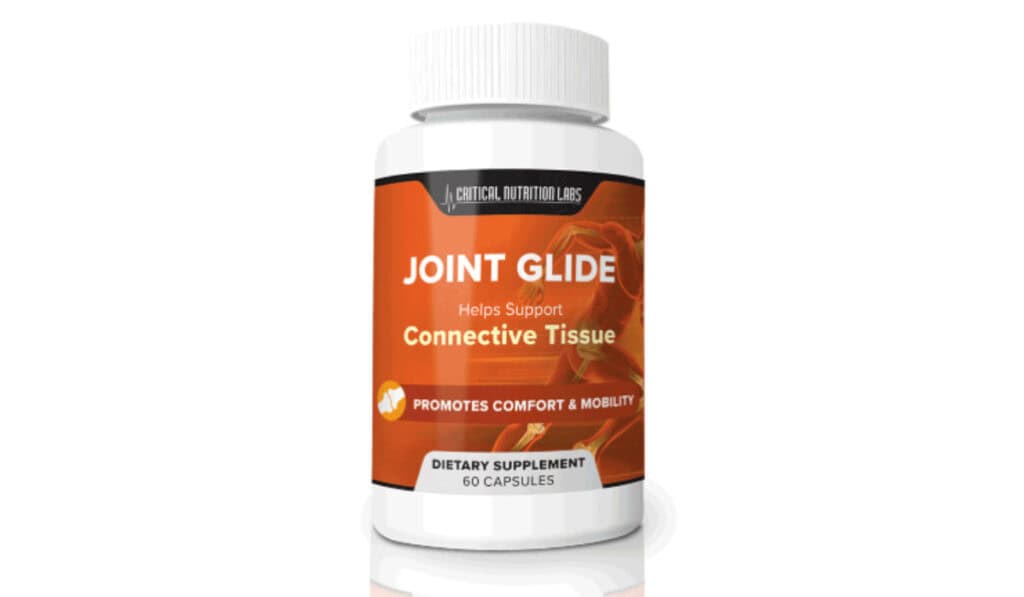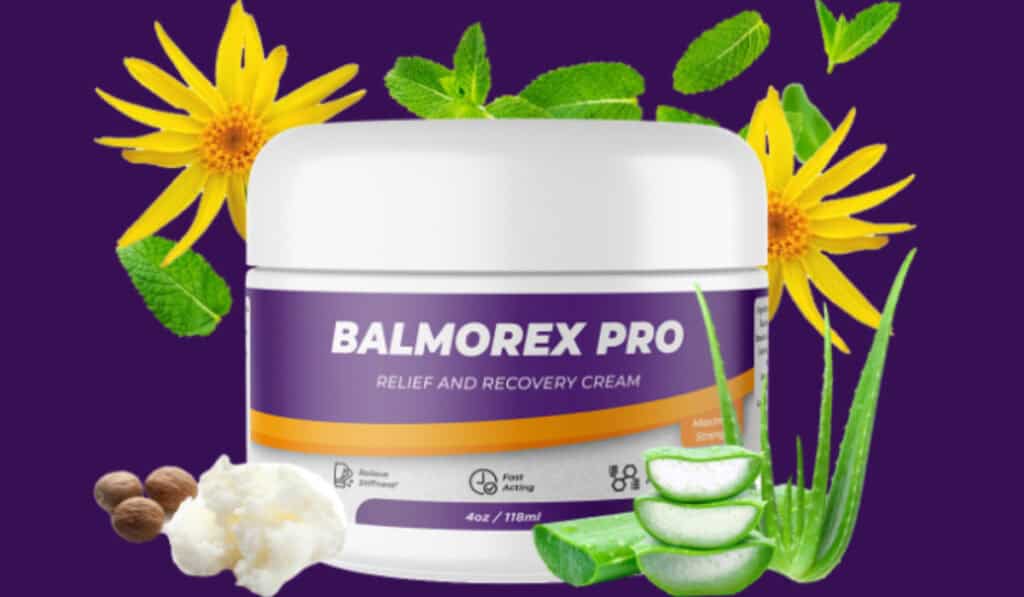A Comprehensive Guide
Nutrition plays a crucial role in keeping your joints healthy. Foods rich in certain nutrients can help in muscle repair and strengthen connective tissues. Including citrus fruits in your diet boosts collagen production, which is vital for joint health. Collagen supplements also support the superficial tissues and skin, providing an extra layer of protection against tissue injury.
The Importance of Nutrition in Maintaining Healthy Joints
A balanced diet rich in specific nutrients can significantly enhance bone strength and support the healing process. To keep your joints working well, your body needs a variety of vitamins and minerals that work together to protect and repair joint tissues.
For instance, calcium and vitamin D are well-known for their role in bone strength, but other nutrients also contribute to the healing process, helping your body recover from daily wear and tear. Ensuring you get these nutrients can make a big difference in how well your joints function and recover over time.
How Diet Influences Joint Injury Prevention and Recovery
What you eat can either help prevent joint injuries or speed up your recovery process. A diet that includes the right balance of nutrients supports the recovery process, helping you to bounce back quicker from injuries. Active individuals, in particular, need to pay attention to their diet to support their bodies during both the prevention and recovery phases.
The Connection Between Anti-Inflammatory Foods and Joint Health
Eating foods with anti-inflammatory properties can play a significant role in maintaining joint health. Omega-3 fatty acids, found in fish and flaxseeds, are powerful anti-inflammatory agents that can help reduce joint inflammation. Incorporating these foods into your diet can support joint health and minimize discomfort.
Anti-inflammatory foods not only help in reducing inflammation but also support the overall health of your joints. By regularly consuming these powerful anti-inflammatory foods, you can help keep your joints in good shape and prevent potential injuries.
The Role of Protein Intake in Tissue Repair and Recovery
Protein plays a key role in muscle repair and the overall recovery process. Consuming adequate protein, according to your body weight, is essential for joint health. Foods like bone broth are not only rich in protein but also contain other nutrients beneficial for joint recovery.
Ensuring you get enough protein helps in the repair of damaged tissues and supports muscle protein synthesis, which is crucial for active individuals. A diet rich in high-quality protein sources can significantly impact your recovery speed and the health of your joints.
Essential Nutrients for Joint Health and Injury Recovery
Nutrients like vitamin K, found in green vegetables, and antioxidants in bell peppers and leafy greens, play a crucial role in tissue healing and promoting injury healing. Citrus fruits, rich in vitamin C, are essential for maintaining healthy connective tissues. Incorporating these foods into your diet supports joint health and aids in injury recovery.
Anti-Inflammatory Foods to Include in Your Diet
Including foods rich in omega-3 fatty acids and other anti-inflammatory properties in your diet can support joint capsules and overall joint health. These powerful anti-inflammatory agents help reduce inflammation, providing relief and supporting recovery.
Omega-3 Fatty Acids: Sources and Benefits
Omega-3 fatty acids are essential for reducing inflammation and supporting joint health. Sources like fish, walnuts, and flaxseeds are rich in omega-3s and can significantly benefit your joints. Regularly consuming these foods can help keep your joints healthy and prevent injuries.
Omega-3 fatty acids not only help with inflammation but also support heart health and cognitive function, making them an essential part of a balanced diet. By incorporating omega-3 rich foods into your meals, you can enjoy a wide range of health benefits, including improved joint health.
Antioxidant-Rich Fruits and Vegetables for Joint Health
Fruits and vegetables are packed with antioxidants that play a crucial role in protecting your joints and supporting tissue healing. Foods like bell peppers, leafy greens, and berries are rich in nutrients essential for maintaining healthy joints.
By including a variety of antioxidant-rich fruits and vegetables in your diet, you can help your body fight off inflammation and support the healing of joint tissues. These foods not only contribute to joint health but also offer numerous other health benefits, making them an important part of any diet.
Protein: Building Blocks for Recovery
Protein is vital for the repair of connective tissues and the overall recovery process. High-quality sources of protein, such as lean meats and bone broth, provide the necessary nutrients for recovery. Collagen supplements can also support joint health by providing the building blocks needed for tissue repair.
High-Quality Protein Sources for Optimal Joint Recovery
In the journey of joint recovery, the role of protein cannot be overstated. Your body needs lean protein to repair tissues and muscles around the joints. Think of lean protein as the building blocks for recovery. Foods like chicken breast, turkey, fish, and plant-based options like beans and lentils are excellent sources. They provide the necessary amino acids without the added fats that can hinder your recovery.
Increasing your intake of these high-quality proteins supports the healing process. It’s not just about quantity; the quality of the protein matters too. Opt for sources that are low in saturated fat and high in essential nutrients. This balance is crucial for not only supporting joint recovery but also for maintaining overall health.
Balancing Macronutrient Intake for Joint Health
For optimal joint health, balancing your macronutrient intake is key. Macronutrients, which include carbohydrates, proteins, and fats, should be consumed in a balanced manner to support joint health and recovery. Carbohydrates provide the energy needed for daily activities, while fats, especially omega-3 fatty acids, play a critical role in reducing inflammation. Protein is essential for tissue repair and recovery, making it a cornerstone of your diet during the recovery period.
Understanding how to adjust your macronutrient intake can significantly influence your recovery. It’s not just about reducing or increasing your intake; it’s about finding the right balance that supports the healing process. This balance will vary from person to person, depending on activity level and recovery demands. Consulting with a nutritionist can help tailor your diet to meet your specific needs.
Dietary Strategies for Enhancing Joint Recovery
Diet plays a pivotal role in enhancing the healing process during a recovery period. Incorporating anti-inflammatory foods and ensuring you’re getting sufficient protein can make a significant difference in how quickly and effectively you recover. Foods rich in omega-3 fatty acids, like salmon and walnuts, can help reduce inflammation, while sufficient protein intake supports tissue repair. Additionally, staying hydrated and managing your macronutrient intake contributes to overall joint health and aids in recovery.
Adjusting your dietary strategies to include a variety of nutrients can support your body’s recovery process. This includes not only what you eat but when you eat. For instance, consuming protein-rich foods after physical therapy sessions can help expedite muscle repair. Public health guidelines suggest a balanced diet with an emphasis on whole foods to support recovery and maintain overall health.
Hydration and Its Role in Joint Health and Recovery
Hydration is a cornerstone of joint health and recovery. Water plays a critical role in maintaining the elasticity and fluidity of joint tissues. It helps in transporting nutrients to the injury site, facilitating the healing process. Furthermore, staying adequately hydrated can help flush out toxins from the body, reducing inflammation and supporting overall well-being. Research is needed to fully understand all the ways hydration impacts joint health, but it’s clear that drinking enough water is beneficial.
It’s recommended to drink at least 8 glasses of water a day, but this can vary based on individual needs and levels of physical activity. Especially during recovery periods, paying attention to your body’s hydration signals is crucial. Ignoring signs of dehydration can slow down the recovery process and exacerbate joint issues. Incorporating hydrating foods like cucumbers and watermelon into your diet can also aid in meeting your hydration goals.
Adjusting Caloric Intake During Recovery Periods
During recovery periods, your body’s energy needs may change. It’s essential to adjust your caloric intake to match your reduced activity level without compromising the nutrients needed for healing. This is where strategies in reducing or increasing calories, based on your recovery status, come into play. A lower calorie intake might be necessary to avoid weight gain when you’re less active. However, it’s crucial to ensure you’re still getting enough nutrients, especially calcium intake, to support bone health and recovery.
Implementing dietary strategies to adjust your caloric intake thoughtfully is essential. It’s not just about eating less; it’s about eating smart. Choosing nutrient-dense foods that are high in vitamins and minerals but lower in calories can help support your body’s recovery needs without the added weight gain. Consulting with a dietitian can provide personalized guidance to adjust your diet during recovery periods, ensuring you’re meeting your body’s needs.
Supplements and Joint Health
The discussion around supplements for joint health is ongoing, with omega-3 fatty acids and dietary intake of specific nutrients at the forefront. These supplements, including fish oil rich in omega-3s, have been shown to reduce inflammation, a key factor in joint pain and recovery. Ensuring your diet provides sufficient protein and incorporates anti-inflammatory foods can also enhance joint health. Supplements should complement, not replace, a balanced diet.
When considering supplements for joint health, it’s essential to focus on those that support your dietary intake without causing harm. Glucosamine and chondroitin are popular choices, but their effectiveness can vary. A holistic approach that includes a balanced diet, regular exercise, and appropriate supplementation, under the guidance of a healthcare professional, can provide the best support for joint health.
The Debate on Glucosamine and Chondroitin Supplements
The debate on the effectiveness of glucosamine and chondroitin supplements in joint health is ongoing. While some studies suggest benefits in reducing joint pain and improving mobility, others find little to no effect. These supplements are thought to help rebuild cartilage and reduce inflammation, yet the scientific community remains divided. For those considering these supplements, it’s important to weigh the potential benefits against the lack of conclusive evidence.
Before adding glucosamine and chondroitin to your regimen, consider your overall dietary intake and lifestyle. Supplements may offer additional support, but they cannot replace the foundational role of a balanced diet and sufficient protein in maintaining joint health. Consulting with a healthcare provider can help you make an informed decision based on your individual health needs and the latest research.
Natural Supplements That Support Joint Health
Beyond glucosamine and chondroitin, there are several natural supplements that can support joint health. Omega-3 fatty acids, found in fish oil, have strong anti-inflammatory properties that can help reduce joint pain and stiffness. Turmeric, with its active compound curcumin, also offers anti-inflammatory benefits. Additionally, incorporating sufficient protein from dietary sources can aid in tissue repair and recovery.
When exploring natural supplements, it’s crucial to consider their interaction with your overall diet and any medications you’re taking. Natural doesn’t always mean safe for everyone, so it’s important to do your research and consult with a healthcare professional. A holistic approach, combining these supplements with a balanced diet and regular physical activity, can provide the best support for joint health.
Practical Tips for Incorporating Joint-Healthy Foods into Your Diet
Incorporating joint-healthy foods into your diet doesn’t have to be challenging. Start by adding more anti-inflammatory foods, like berries, leafy greens, and fatty fish, to your meals. These foods can help reduce inflammation and support joint health. Also, ensure you’re getting enough high-quality protein to aid in recovery and tissue repair. Making small, consistent changes to your diet can have a significant impact over time.
Planning your meals can also make it easier to include joint-healthy foods in your diet. Prepare meals that incorporate a balance of macronutrients, with a focus on anti-inflammatory ingredients and sufficient protein. Snacking on nuts and seeds or adding a side salad to your meals are simple ways to increase your intake of nutrients beneficial for joint health. Remember, every small change contributes to a healthier you.
Creating Anti-Inflammatory Meal Plans
Creating anti-inflammatory meal plans starts with knowledge of which foods to include and which to avoid. Focus on incorporating foods rich in omega-3 fatty acids, antioxidants, and fiber. Salmon, walnuts, berries, and whole grains are excellent choices. These foods can help minimize inflammation and support overall joint health. Planning your meals around these ingredients ensures you’re consistently feeding your body the nutrients it needs to recover and maintain healthy joints.
When designing your meal plan, variety is key. Try incorporating different anti-inflammatory foods each week to keep your meals interesting and nutritious. Experiment with spices like turmeric and ginger, both of which have anti-inflammatory properties, to add flavor and additional health benefits to your dishes. By planning ahead and getting creative with your meals, you can enjoy a diet that not only tastes good but also supports your joint health and recovery.
Snack Ideas Rich in Omega-3 and Antioxidants
When looking for snacks that support joint health, focus on those packed with omega-3 fatty acids and antioxidants. Walnuts, chia seeds, and flaxseeds are super snacks that offer a hefty dose of omega-3s. You can easily sprinkle them on your yogurt or blend them into smoothies. For antioxidants, berries like blueberries, strawberries, and blackberries are not just delicious; they’re also joint-friendly. Their sweet flavor and health benefits make them a perfect snack any time of the day.
Another great option is dark chocolate, which is rich in antioxidants, but remember to choose one with a high cocoa content and consume it in moderation. Pairing these antioxidant-rich snacks with a source of healthy fats, such as avocado slices, can enhance the absorption of fat-soluble vitamins, thereby boosting their benefits for your joints. So, next time you reach for a snack, consider these options that nourish your joints and taste great too.
The Role of Nutrition in Professional Athletes’ Joint Health
For professional athletes, nutrition plays a crucial role in maintaining joint health and facilitating recovery from injuries. A diet rich in anti-inflammatory foods and essential nutrients can help reduce inflammation, promote healing, and strengthen the tissues surrounding the joints. Including foods high in omega-3 fatty acids, such as salmon and walnuts, can significantly impact reducing joint pain and stiffness. Additionally, athletes focus on adequate protein intake to support tissue repair and recovery, ensuring they can perform at their best.
Hydration is another key component of an athlete’s dietary strategy for joint health. Staying well-hydrated helps maintain the lubrication of joints and can prevent injuries. During recovery periods, adjusting macronutrient intake to match reduced activity levels while ensuring the body receives all necessary nutrients for healing is vital. By prioritizing these nutritional strategies, professional athletes can enhance their joint health, prevent injuries, and recover more quickly when injuries do occur.
Case Studies: Recovery Diets of Elite Athletes
Examining the recovery diets of elite athletes provides valuable insights into the role of nutrition in healing and performance. For instance, after experiencing musculoskeletal injuries, many athletes increase their intake of foods rich in omega-3 fatty acids and antioxidants to combat inflammation and support recovery. A well-known basketball player attributed his quick recovery from injury to a diet that emphasized protein for muscle repair, alongside plenty of fruits and vegetables to boost antioxidant levels in his body.
Another case study involves a professional soccer player who focused on balancing his macronutrient intake and incorporating bone-healthy nutrients like calcium and vitamin D into his diet to support bone formation and recovery from a bone fracture. His diet also included high-quality protein sources to aid in tissue repair and recovery, demonstrating the comprehensive approach athletes take to nutrition for optimal healing.
Nutritional Protocols for Injury Prevention in Sports
To prevent sports injuries, nutritional protocols play a significant role alongside physical training. Athletes are advised to adopt diets that support muscle and joint health, focusing on foods that promote bone formation and reduce inflammation. Limited research highlights the importance of balancing macronutrients, with a particular emphasis on adequate protein and carbohydrate intake to support muscle recovery and energy levels. Foods rich in calcium and vitamin D are also prioritized to enhance bone health and prevent fractures.
Moreover, athletes incorporate specific nutritional strategies to minimize the risk of musculoskeletal injuries. This includes optimizing hydration to maintain tissue health and flexibility, as well as ensuring a sufficient intake of antioxidants through fruits and vegetables to combat exercise-induced oxidative stress. By following these nutritional protocols, athletes can not only improve their performance but also significantly reduce the risk of injury.
Final Thoughts on Nutrition’s Role in Joint Health and Recovery
Nutrition undoubtedly plays a therapeutic role in preventing muscle loss, supporting anabolic resistance, and aiding recovery from sports injuries. Emphasizing amino acid and protein intake is essential for repairing exercise-induced muscle damage and promoting tissue growth. Foods rich in essential nutrients support the body’s natural healing processes, making nutrition a cornerstone of effective injury recovery strategies.
By understanding the connection between diet and joint health, individuals can make informed choices that enhance their well-being. Incorporating anti-inflammatory foods, balancing macronutrient intake, and staying hydrated are key components of a diet that supports joint health and recovery. As part of a holistic approach to wellness, nutrition offers powerful tools for preventing injury and ensuring a swift return to optimal health and performance.
The Holistic Approach to Joint Injury Prevention and Healing
Adopting a holistic approach to joint injury prevention and healing involves more than just physical training; it includes integrating nutrition strategies that support overall body health. Reducing the risk of injury, especially in athletes who frequently encounter stress on certain body regions, requires a diet that strengthens those areas prone to injury. Foods rich in omega-3 fatty acids, antioxidants, and adequate protein support muscle and joint health, making them less susceptible to damage.
This comprehensive strategy not only focuses on strengthening frequently injured body regions but also emphasizes the importance of a balanced diet in maintaining optimal health. By incorporating these nutrition strategies, individuals can enhance their body’s resilience, reduce the likelihood of injury, and ensure a quicker recovery process, should an injury occur. This holistic approach underscores the significance of nutrition in not just healing but also in injury prevention.
Setting Realistic Expectations and Goals for Recovery
Recovery from injury is a journey that requires patience, understanding, and realistic goal-setting. Nutrition plays a critical role in this process, offering the building blocks needed for healing. Key considerations include adjusting nutrition for injury recovery, focusing on essential amino acids, and ensuring adequate intake of nutrients that support bone injury healing. The International Journal of Sport Nutrition and Exercise Metabolism (Int J Sport Nutr Exerc Metab) suggests that nutritional strategies can significantly impact the recovery period, particularly in reducing the time athletes spend away from training or competition.
It’s important to recognize that injuries resulting in more than 7 days of absence from competition or training demand a meticulous approach to nutrition to support the physical and psychological aspects of recovery. This includes careful management of rapid weight changes, optimizing preoperative nutrition, and considering nutritional supplements for treatment and prevention. By setting realistic expectations and following tailored nutritional plans, athletes can facilitate a smoother transition back to full health and performance.







